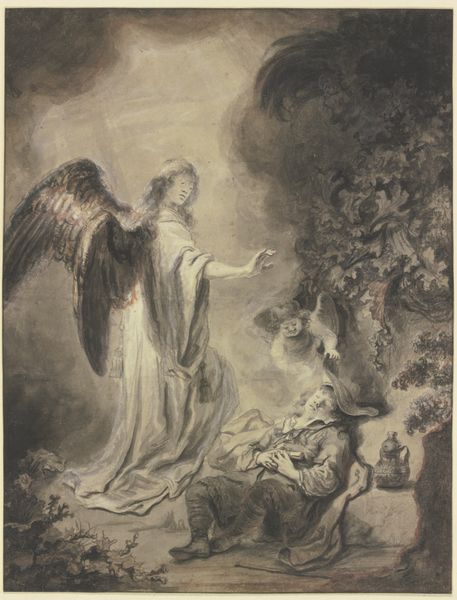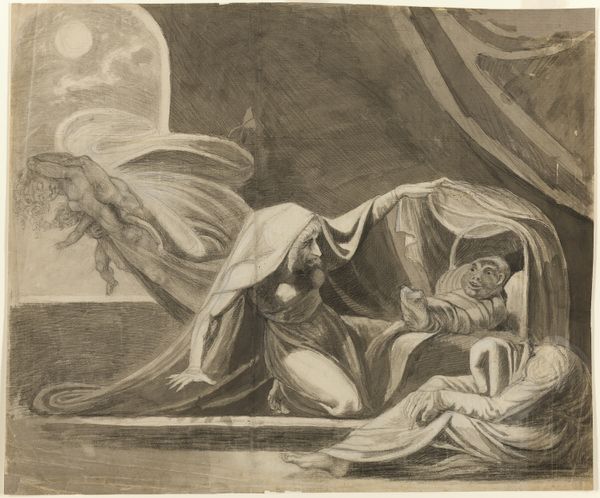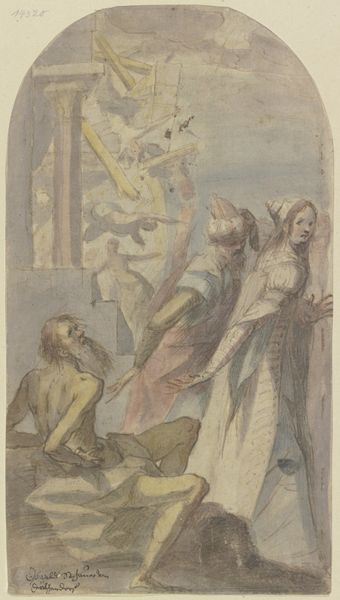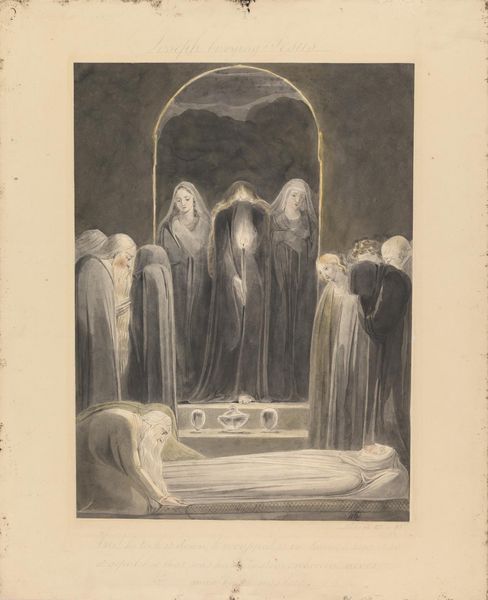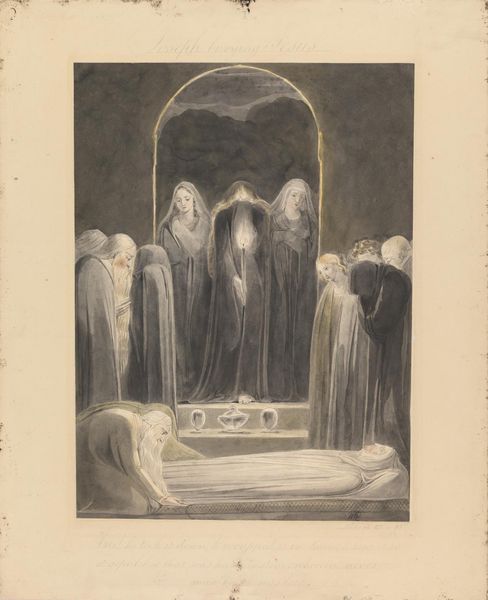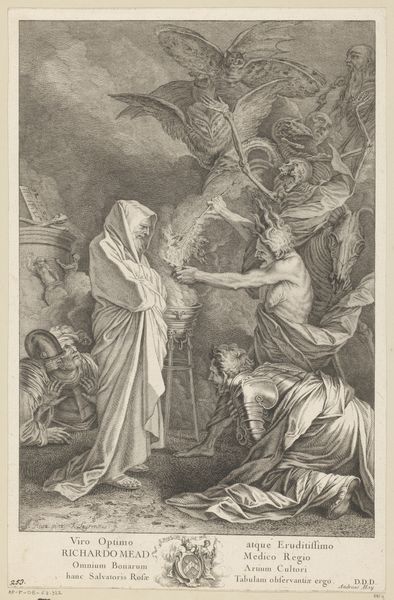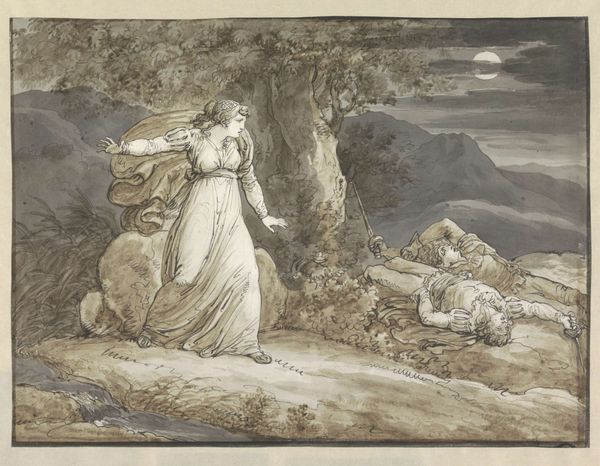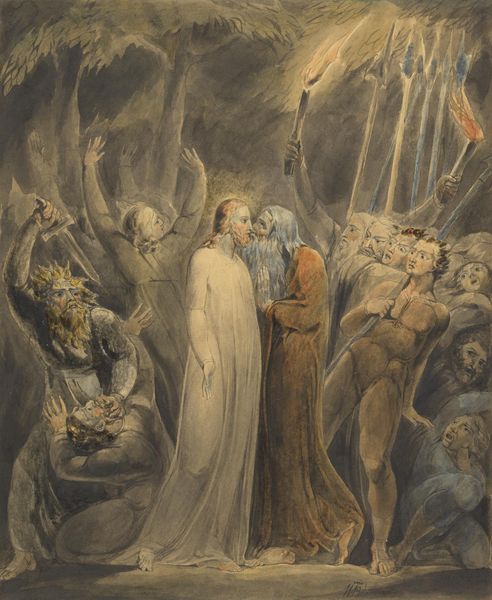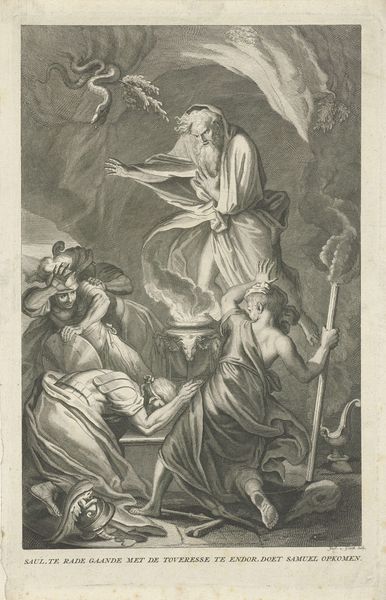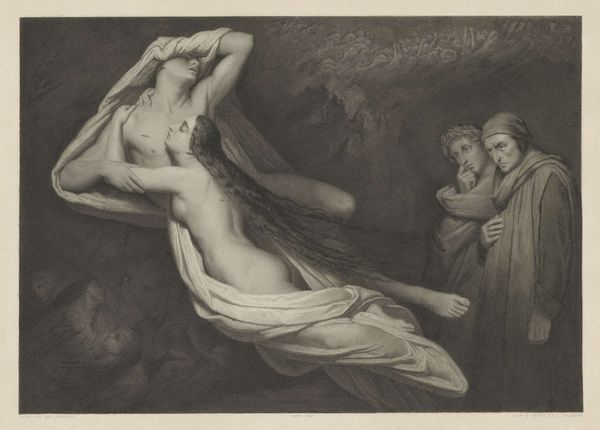
The Parable of the Wise and Foolish Virgins 1794 - 1805
0:00
0:00
drawing, print, watercolor
#
drawing
#
allegory
#
narrative-art
# print
#
charcoal drawing
#
figuration
#
watercolor
#
romanticism
#
watercolour illustration
#
history-painting
Dimensions: Sheet: 14 3/16 × 13 1/16 in. (36 × 33.2 cm)
Copyright: Public Domain
William Blake rendered "The Parable of the Wise and Foolish Virgins" in watercolor and graphite, probably between 1800 and 1806. The scene illustrates a Biblical story about readiness for the coming of the bridegroom. Blake belonged to a radical intellectual culture in Britain, questioning religious and political authority. His art frequently critiques social norms through innovative visual language. Here, the figures are lit dramatically, heightening the emotional intensity. This theatricality, combined with fluid lines, reflects Blake’s spiritual vision. The wise virgins carry lamps, symbolizing preparedness, while the foolish ones, shown in distress, failed to bring extra oil. Above, an angel announces the bridegroom’s arrival, a sign of divine judgment. Blake’s style contrasts sharply with the academic art of his time, which favored classical ideals and restraint. He looked to the Bible for his inspiration. Understanding Blake requires delving into his personal mythology, his poetry, and the religious and political debates of his era. By exploring these contexts, we can appreciate how Blake used art to challenge and transform perceptions of faith and society.
Comments
No comments
Be the first to comment and join the conversation on the ultimate creative platform.
